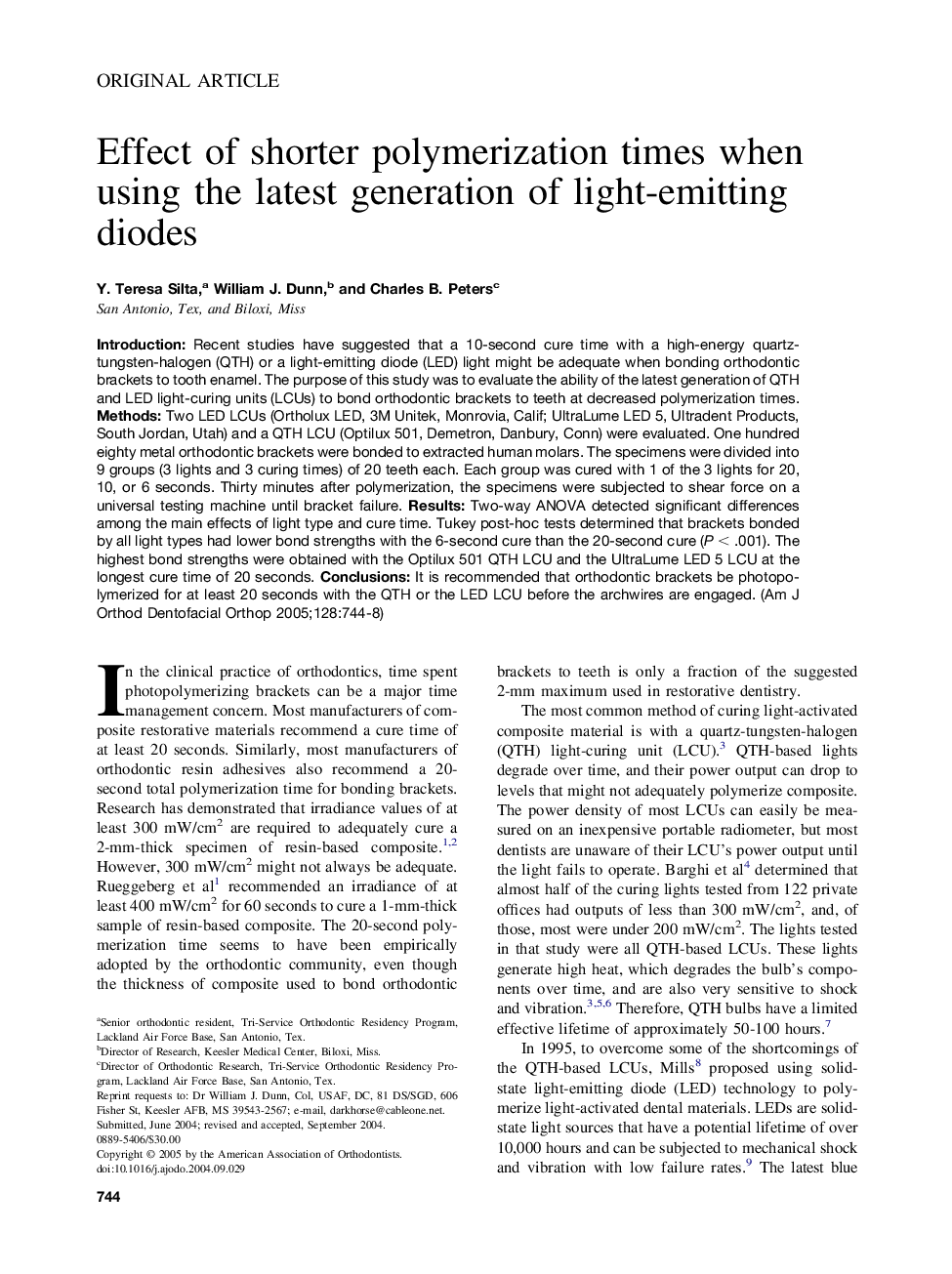| Article ID | Journal | Published Year | Pages | File Type |
|---|---|---|---|---|
| 9992502 | American Journal of Orthodontics and Dentofacial Orthopedics | 2005 | 5 Pages |
Abstract
Introduction: Recent studies have suggested that a 10-second cure time with a high-energy quartz-tungsten-halogen (QTH) or a light-emitting diode (LED) light might be adequate when bonding orthodontic brackets to tooth enamel. The purpose of this study was to evaluate the ability of the latest generation of QTH and LED light-curing units (LCUs) to bond orthodontic brackets to teeth at decreased polymerization times. Methods: Two LED LCUs (Ortholux LED, 3M Unitek, Monrovia, Calif; UltraLume LED 5, Ultradent Products, South Jordan, Utah) and a QTH LCU (Optilux 501, Demetron, Danbury, Conn) were evaluated. One hundred eighty metal orthodontic brackets were bonded to extracted human molars. The specimens were divided into 9 groups (3 lights and 3 curing times) of 20 teeth each. Each group was cured with 1 of the 3 lights for 20, 10, or 6 seconds. Thirty minutes after polymerization, the specimens were subjected to shear force on a universal testing machine until bracket failure. Results: Two-way ANOVA detected significant differences among the main effects of light type and cure time. Tukey post-hoc tests determined that brackets bonded by all light types had lower bond strengths with the 6-second cure than the 20-second cure (P < .001). The highest bond strengths were obtained with the Optilux 501 QTH LCU and the UltraLume LED 5 LCU at the longest cure time of 20 seconds. Conclusions: It is recommended that orthodontic brackets be photopolymerized for at least 20 seconds with the QTH or the LED LCU before the archwires are engaged.
Related Topics
Health Sciences
Medicine and Dentistry
Dentistry, Oral Surgery and Medicine
Authors
Y. Teresa Silta, William J. Dunn, Charles B. Peters,
